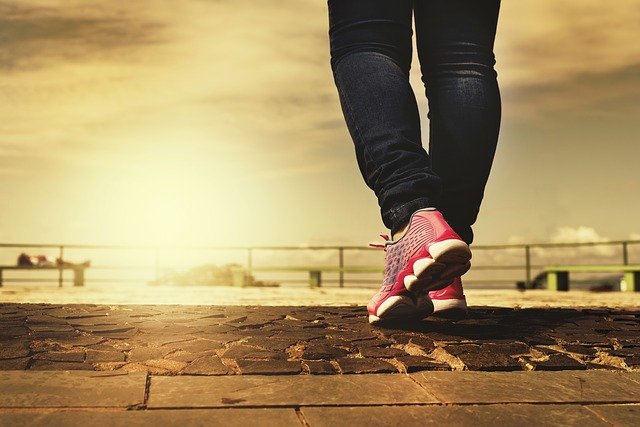
Recent studies have found that walking is a good way to tackle burgeoning rates of obesity and other lifestyle diseases.
Obesity and diabetes have reached epidemic proportions in developed countries and are dangerously on the rise in many developing countries.
These diseases are linked to specific dietary and lifestyle changes which include patterns of increased eating, drinking, and smoking along with reduced physical activity.
Many studies have shown that physical activity is essential for well being.
The general guidelines are that 30 minutes or more of walking every day at a speed of between five and eight kilometers per hour can improve health.
And studies show that even when people don’t quite manage to walk for the recommended 30 minutes a day the benefits can still accrue. This proves that some walking is better than none at all.
Here are 6 reasons everyone should take a daily outdoor walk.
It helps prevent Type 2 diabetes
The American Diabetes Association shows strong evidence of the benefits of walking for people who have pre-diabetes, Type 2 Diabetes, or even Type 1 Diabetes.
Type two diabetes is the most common and is linked to insulin resistance (or a lack of it).
Type one diabetes occurs when the body does not naturally produce sufficient insulin and generally presents in childhood. It is not necessarily related to lifestyle habits.
It helps lower blood pressure
High blood pressure is a direct risk for stroke and heart-related illnesses and threats. Walking demonstrably reduces systolic and diastolic blood pressure.
Systolic blood pressure is the “first number” obtained when blood pressure is measured and represents the pressure in the arteries at the moment the heart is actively pumping blood into the system.
Diastolic, the “second number”, represents pressure in the arteries during the heart’s rest period.
In other words, it stands to reason that this pressure should be considerably lower than systolic and if it isn’t, it represents a certain risk for a cardiovascular event.
The reduction can be statistically significant enough to save a life.
For example, if a person’s diastolic blood pressure is 90 mm Hg they would be at considerable risk of blood-pressure-related events.
Reducing the figure by 5 mm Hg shifts them from the “mild hypertension” category of risk to “high normal”.
It helps decrease depression
Rates of depression have risen 20% globally in a decade. This places depression as one of the leading causes of disability worldwide.
Walking has been recommended for managing symptoms of depression for a long time.
It’s been identified as an effective strategy, particularly when combined with the positive effects of sunshine and fresh air, as well as the social cohesion experienced when in a group.
It helps reduce body fat
Humans were designed to move for optimal functioning and were designed to handle walking great distances over many hours.
Walking can contribute to improved body composition, with statistically significant reductions in body fat.
To put this into perspective, this doesn’t include any dietary changes, and evidence shows that exercise combined with a change in diet produces greater changes to body composition than exercise alone.
It doesn’t cost a thing
Walking outdoors is ideal when resources are limited, as a study in low-income communities in South Africa shows.
The study showed how the physical activity that promoted participation of rural communities is feasible – and accessible.
The activities, in turn, could reduce the growing burden of chronic diseases.
Walking in groups also adds an important element of safety.
And it helps with motivation, as another meta-analysis which evaluated 42 studies found: when people walk in groups outdoors, they are less likely to give up too easily.
Finally, it has no adverse side effects
Probably the best news: when individuals around the world participated in various walking programs based on the review of these studies, no notable adverse side effects were reported.
Walking is safe for children, adults and older adults alike. The take-home message here is that there is nothing to lose from trying it out and plenty to gain.
Copyright © 2018 Knowridge Science Report. All rights reserved.



